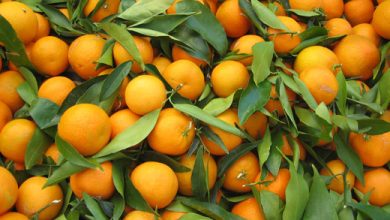WILD PLANTS THAT WE CAN EAT (part II)

As we said in the first chapter of 10 WILD PLANTS THAT WE CAN EAT (I), we all like to know about wild plants that we can find on a walk in the countryside. From Agrohuerto.com we also want to encourage you to participate in our forum since we are sure that you know more wild edible plants that we are not going to name and it can be interesting for the entire community that we are generating around this website.
We propose another six more
Silene vulgaris, Catfish
This herb belonging to the Caryophyllaceae family is known as colleja, farolets, conillets, colitxos, rabbit grass, sanjuanin, berzuela… It grows in the Mediterranean climate and its flowering time is in spring and summer. It has a characteristic appearance since its white flowers have an inflated calyx. This peculiarity is what gives the scientific name to the plant, since it is a reference to Silenus, adoptive father of Dionysus (son of Zeus and Semele); who comes out in all the paintings with a swollen belly. Like most of the wild herbs that we know, it grows in uncultivated areas and can reach a height of 100 cm!:EITHER

We can eat its stems and tender leaves, especially before flowering, to use in tortillas or stews. And if we collect it later, it will have a somewhat harsh and acidic flavor that we can accompany it with a good meat dish. If we want to cook them, it is convenient not to do it for more than 5 minutes since it can lose some of its nutrients.
Hemerocallis
It is a plant well known for its flower belonging to the Xanthorrhoeaceae family. Although it is now more common to see it in European areas, this plant comes from the temperate regions of Asia, but since it is liked by Europeans as an ornamental plant, it has finally become naturalized in our region. Also known as » day lily «, due to the short life of its flower.
It is a perennial herb that is very important in the Asian world. On the one hand, it is a basic plant in oriental medicine. The stems and roots are a perfect pain reliever that has been used for centuries in the Far East. They also have diuretic properties and in modern studies, Hemerocallis has been found to possess components such as folomuroside with antioxidant capacity.
On the other hand, it is a plant with a certain relevance in the kitchen since its flowers are sold in the market to be used in soups or in meats to give a bitter taste. Do not confuse with the lily, since the flower of this is toxic.
I leave you this video so you can see how it is grown:
Portula oleracea, Purslane
It is a plant with fleshy leaves and very red stems and yellow flowers of the Portulacaceae family.We can find it in sandy soils, a little moist, such as on the edges of agricultural fields or even in pots and pots. It has a great capacity to invade fields and hence it is considered a «weed». This is also due to the way it sticks to the ground, a reason that led to the creation of two popular sayings such as: «My love spreads like purslane» or «You are lazier than purslane»

As for its properties, purslane can provide us with substances that help digestion, mineral salts such as calcium, iron, magnesium, potassium, sulfur and phosphorus; and vitamins C and A. Of the latter, the antioxidant capacity it has. On the other hand, its topical use can help us calm skin inflammations.
Silybum marianum, Milk thistle
Also known as milk thistle, goat thistle, Santa Maria thistle… it is a plant belonging to the Compositae family that we usually find along roadsides and in dry, uncultivated land during the warm months.
It is an annual or biennial plant that can reach two meters in height. It has very characteristic properties such as its large chapters with reddish tones, its large thorns and its large leaves with white spots and a thorny outline.

It is used in the kitchen in a traditional way and it is not difficult to find it in a supermarket. Its large leaves can be used for a salad, once the thorny contour has been cut (note the thorns in the throats:P). You can also boil the leaves such as the roots and flower heads, being a good food with antioxidant properties.
Allium ampeloprasum, wild leek
This is a bulbous plant of the Liliaceae family, which, like several species of this family; It has good medicinal and culinary properties. It is known by many names such as wild leek, leek, ahoporro, gypsy garlic, donkey garlic, vineyard leek, bearded garlic, wild garlic, wild garlic, stork garlic, blandino garlic, elephant garlic, Chilote garlic…

The inflorescences that it presents are spherical and large with purple colors that we can find in grasslands, banks or ditches. Later, for use in the kitchen, we can use its bulbs and tender stems in salads or stews; or we can prepare a succulent tortilla with its chopped stems.
Lactuca virosa; wild lettuce
From the Asteraceae family, being the wild species of lettuce that we all know. It has calming properties and helps to eliminate gases and helps to carry out a good digestion. As an anecdote, tell that it has a use to control excess sexual desire. So be careful with the salads that we can make with wild lettuce in a passion dinner. The result may not be as expected…
Well agrohuerters, I hope now that you write to me in the forum telling me your opinion of some of these plants and others that I have not mentioned.
See you in the orchard!


![Photo of Bella Sombra: [Cultivation, Irrigation, Care, Pests and Diseases]](https://www.complete-gardening.com/wp-content/uploads/2022/08/bella-sombra-cultivation-irrigation-care-pests-and-diseases-390x220.jpg)
![Photo of How to Plant a Weeping Willow: [Complete Guide + Images]](https://www.complete-gardening.com/wp-content/uploads/2021/06/sauce_lloron_1562928917-390x220.jpg)
